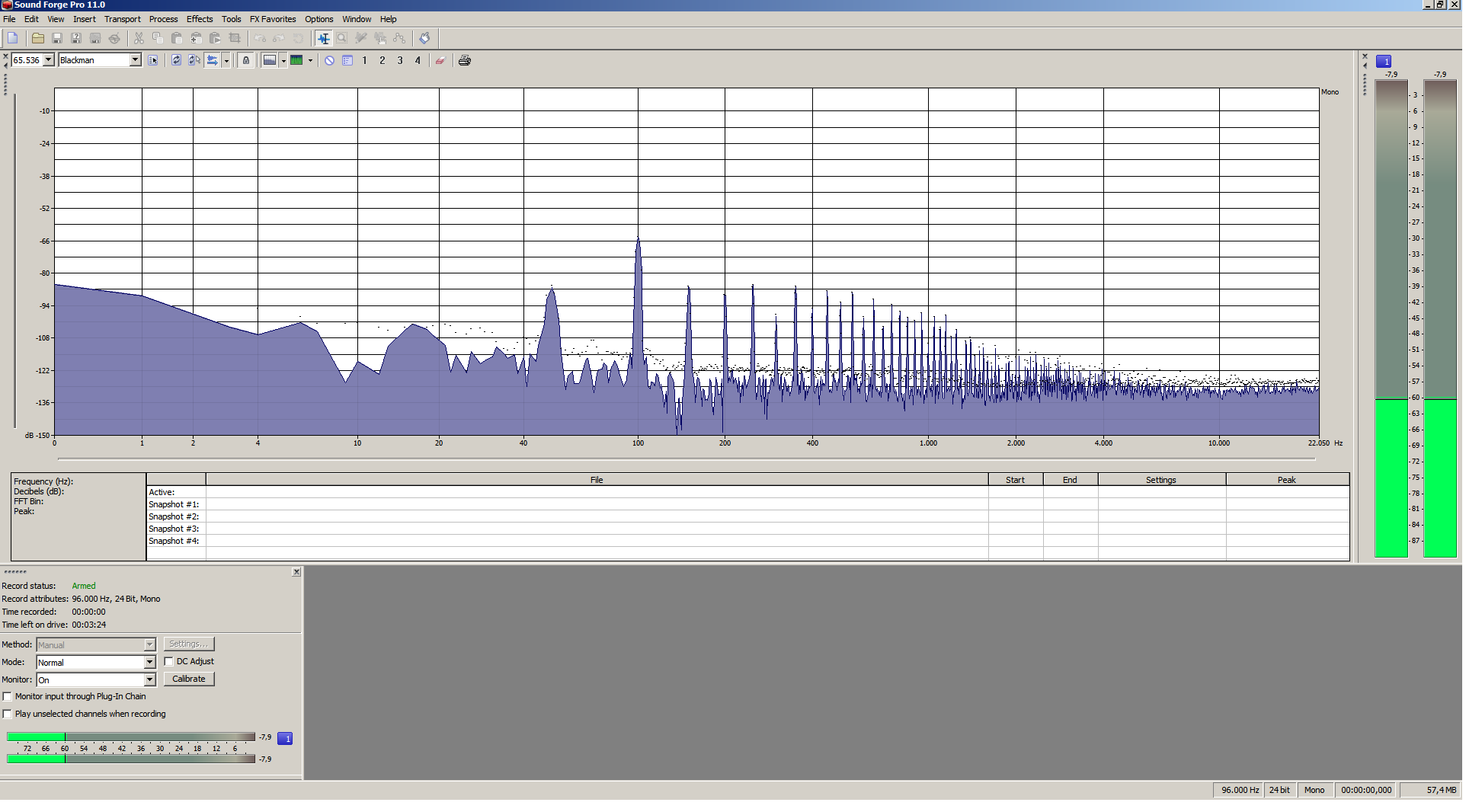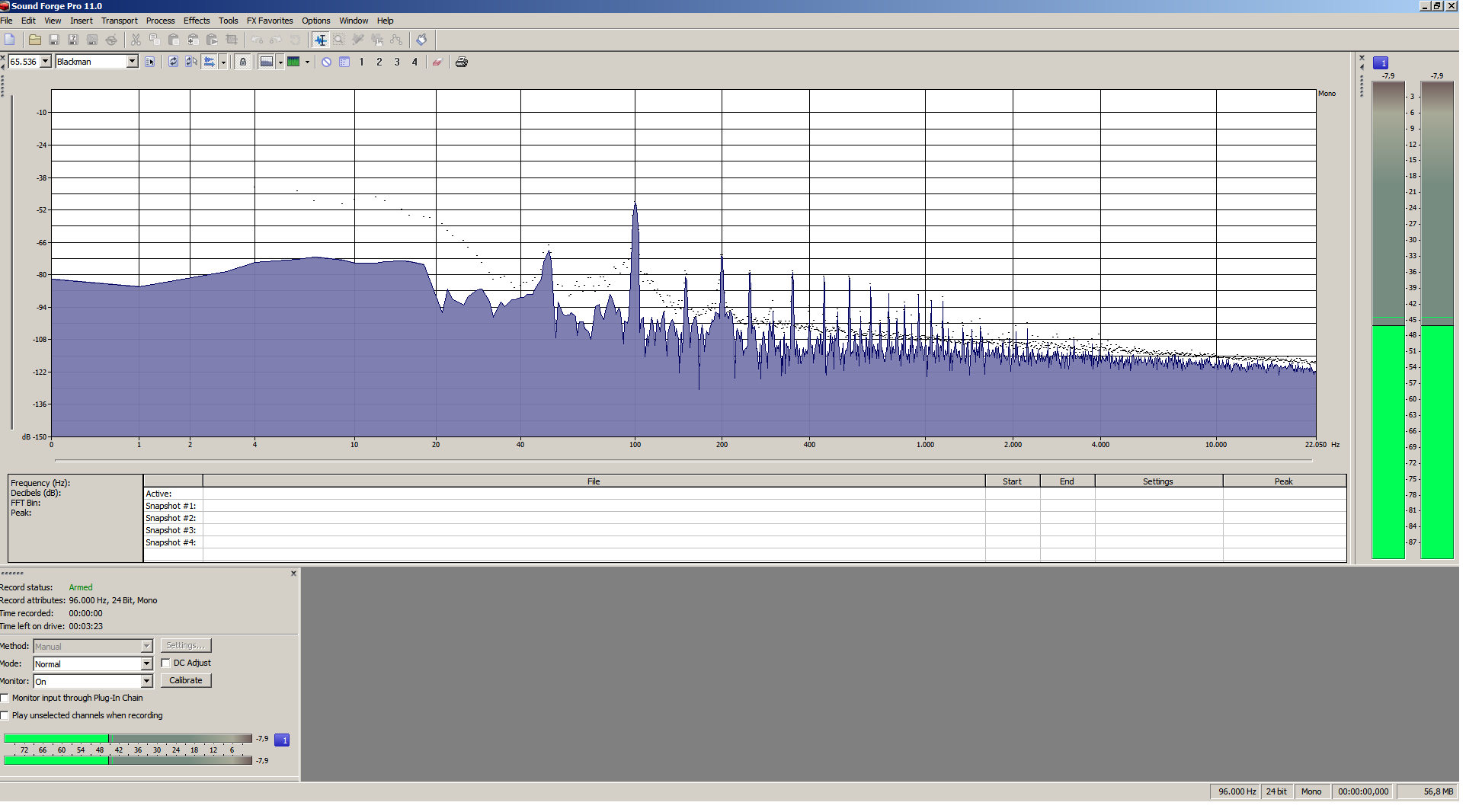Hi again

sorry for bothering you again.
I am modding my G9(which i made myself). I changed transformers, with toroidals and better caps for filtering(For 245, Nichicon KX 100uf 400v, and 12v, elna silmic II 1000uf 25v capacitors).
For now, i got great results, i have taken some images and measures with soundforge. Before the mods, i just had normal Transformers(some pages back there are some photos), i got a hum in 150hz 200hz ad harmonics which its gone now, but now i have some noise. The actual measurement was made from a native instruments Kontrol audio interface, through mic input, and for example a -50dBu 1khz test tone, gave me like a -20(or -25m dont remember quite well) db FS measurement.
I made some measures, they are, with the preamp, output to the NI kontrol, One with without gain(all turn left) and master output closed, and other with master output all right(without gain also) and i got this hum, and measures.
I havent drilled the holes for the new toroids yet, lots of spaghetti cables right now. Some pics:
http://i.imgur.com/3fRc7YX.jpg
http://i.imgur.com/cX3Ix07.jpg
http://i.imgur.com/FAUoU38.jpg
http://i.imgur.com/GwzJbBp.jpg
Any ideas on how can i at least get noise 10dBs quieter?
With my duet, noise was not an issue, with new trannys and caps, i guess noise wont bother, but when i am recording electric guitars through the G9, and apply Distortion plug ins, noise comes up.
I dont have this G9 in my studio right now, so i cant get more accurate measures, but thanks for any recommendation

Thanks and sorry for my english.





















![Soldering Iron Kit, 120W LED Digital Advanced Solder Iron Soldering Gun kit, 110V Welding Tools, Smart Temperature Control [356℉-932℉], Extra 5pcs Tips, Auto Sleep, Temp Calibration, Orange](https://m.media-amazon.com/images/I/51sFKu9SdeL._SL500_.jpg)















